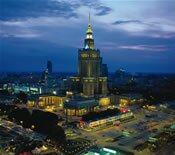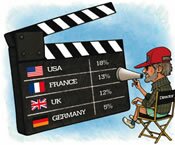Inflight Magazine of Brussels Airlines
Welcome to the Inflight Magazine of Brussels Airlines
Business trends
Our round-up of what’s happening in the business world across Europe
Text Boyd Farrow
RADAR
Engineering failure
 Germany, the land of Vorsprung durch Technik, is facing an acute shortage of skilled engineers. The VDI, the Association of German Engineers, believes the shortage is costing Europe’s largest economy €7bn a year and estimates there are 95,000 unfilled posts, twice the number as two years ago.
Germany, the land of Vorsprung durch Technik, is facing an acute shortage of skilled engineers. The VDI, the Association of German Engineers, believes the shortage is costing Europe’s largest economy €7bn a year and estimates there are 95,000 unfilled posts, twice the number as two years ago.
Bosch chairman, Franz Fehrenbach, has warned that the lack of engineers would be “the key problem for the future”, noting that new sectors such as financial services need engineers while young people are less interested in science subjects. Fehrenbach said that for every 100 old engineers, only 90 young engineers are being trained in Germany, compared with an average of 190 in other Western countries. Manfred Wittenstein, the head of the VDMA engineering association, has admitted: “It could act as a brake on our future growth.
Horrified that even Italy is producing more engineering students, German companies are desperately addressing the problem, trying to get girls interested in science and working more closely with technical universities. Bosch, which has 2,500 vacancies, is even looking to India and China to fill some posts. For some Germans, that’s as hard to swallow as having to import English penalty takers.
Buffett: all he can eat
 US investment guru Warren Buffett has been visiting Frankfurt, Lausanne, Madrid and Milan to assess the investment possibilities of Europe’s big family-owned businesses. Buffett, ranked by Forbes as the world’s richest man, said he sees more opportunities for big acquisitions in Europe than anywhere else, and that he missed an opportunity by not visiting the continent 10 years ago.
US investment guru Warren Buffett has been visiting Frankfurt, Lausanne, Madrid and Milan to assess the investment possibilities of Europe’s big family-owned businesses. Buffett, ranked by Forbes as the world’s richest man, said he sees more opportunities for big acquisitions in Europe than anywhere else, and that he missed an opportunity by not visiting the continent 10 years ago.
Buffett owns about a third of Berkshire Hathaway Inc, which he built over four decades from a maker of men’s suit linings into a holding company with businesses that range from confectionary to insurance. Buffett is looking for places to put the company’s €22.38bn spare cash. He says there’s a dearth of opportunities in the US, and has already invested in China, Israel and the UK.
At a press conference in Madrid – where he met King Juan Carlos of Spain and had dinner with 40 entrepreneurs – he said: “We need acquisitions and there are going to be more possibilities in Europe probably than any place else on the globe.” Buffett said he is on the lookout for companies with pre-tax profits of at least €48m that can be successful in the long run. Long run? We want to know what the 77-year-old eats, not where he invests.
Growing gains… Hatching a comeback
 A revived Fabergé, under the stewardship of CEO Mark Dunhill – formerly president of leather and accessories brand Alfred Dunhill – will next year launch its first jewel-encrusted egg since 1917. The famous company, now owned by the UK-registered, South African-based private equity fund Pallinghurst, aims to position itself above the likes of Cartier, Gucci and Bulgari with an ultra-exclusive line of objects of fine art and jewellery. Sean Gilbertson, son of Pallinghurst chief Brian Gilbertson and one of the architects of the comeback, says: “For the foreseeable future there’s no clothing or anything along those lines. It’s very much sticking to what Fabergé was originally all about.”
A revived Fabergé, under the stewardship of CEO Mark Dunhill – formerly president of leather and accessories brand Alfred Dunhill – will next year launch its first jewel-encrusted egg since 1917. The famous company, now owned by the UK-registered, South African-based private equity fund Pallinghurst, aims to position itself above the likes of Cartier, Gucci and Bulgari with an ultra-exclusive line of objects of fine art and jewellery. Sean Gilbertson, son of Pallinghurst chief Brian Gilbertson and one of the architects of the comeback, says: “For the foreseeable future there’s no clothing or anything along those lines. It’s very much sticking to what Fabergé was originally all about.”
Fabergé was founded in 1842 by Russian jeweller Gustav Fabergé, who designed elaborate baubles for the Russian tsars. The family was dispersed throughout Europe following the 1917 Russian revolution and the Fabergé brand went through many owners before being sold for $1.55bn to Unilever in 1989. Pallinghurst bought the rights from the conglomerate last year for an undisclosed sum. Two of Gustav Fabergé’s descendants, Tatiana and Sarah Fabergé, are serving as advisers to the company, presumably saying things like: “No, Mr Abramovich, there is no matching spoon.”
DRAWING BOARD
 THE FUTURE SHAPES UP Materialise – a company based in Leuven, Belgium – is getting a lot of people excited.
THE FUTURE SHAPES UP Materialise – a company based in Leuven, Belgium – is getting a lot of people excited.
The company has created a software package called Magics, which translates computer-generated designs into something that can be immediately printed off in three dimensions by a machine. For 18 years, Materialise’s work has been used by car makers and manufacturers of medical equipment, but five years ago the company started a creative department, .MGX, to produce lighting for the lifestyle market.
One of .MGX’s biggest customers to date has been New York’s Museum of Modern Art, which recently displayed Lars Spuybroek’s MyLight.MGX as part of Design & the Elastic Mind, Paola Antonelli’s exhibition exploring designers’ responses to technological change.
“It’s plausible to think that in the future anybody will be able to access the matrix design of a chair, a radiator or even a car via the internet, and customise it freely within certain parameters,” Antonelli said at the exhibition’s launch. “This would transform design, production, distribution and consumption in radical ways.”
Why are we here?
WATCHING A BELGIAN ROAD MOVIE
 Belgian director Bouli Lanners’ road movie Eldorado – the story of a vintage car dealer who goes on a trip with a young burglar – has won the Europa Cinemas Label as Best European Film in the Director’s Fortnight at Cannes. The film will now receive extra financial support and promotion from Europa Cinemas’ network of European exhibitors and, unusually for a Belgian film, may even be seen elsewhere in Europe.
Belgian director Bouli Lanners’ road movie Eldorado – the story of a vintage car dealer who goes on a trip with a young burglar – has won the Europa Cinemas Label as Best European Film in the Director’s Fortnight at Cannes. The film will now receive extra financial support and promotion from Europa Cinemas’ network of European exhibitors and, unusually for a Belgian film, may even be seen elsewhere in Europe.
In a statement, the jury said: “This Belgian road movie manages to combine a great sense of humour with a darker side. Eldorado really has the potential to attract a wide audience across Europe.”
Lanners said: “We have to battle against the stereotyped impressions that audiences may have about Belgian films. They’re not all grey and gloomy. I would like to be able to boost the popularity of Belgian auteur films. Some Flemish films enjoy considerable success among audiences: these films feature BVs [bekende Vlamingen, or well-known Flemish names]. In Wallonia, we have a lack of WCs [Wallons connus, or well-known Walloons].”
Upgrade your trip
POLE POSITION
 Warsaw is the best-value cultural destination, according to a 10-city survey by the UK’s Post Office. The Polish capital was judged cheapest for a three-day trip visiting museums, galleries and heritage sites. The Post Office said museums and galleries, the staple of city breaks, had now been joined by visits to the opera, ballet and concerts. The cultural highlights of Warsaw include the Palace of Culture & Science and the Polish National Opera.
Warsaw is the best-value cultural destination, according to a 10-city survey by the UK’s Post Office. The Polish capital was judged cheapest for a three-day trip visiting museums, galleries and heritage sites. The Post Office said museums and galleries, the staple of city breaks, had now been joined by visits to the opera, ballet and concerts. The cultural highlights of Warsaw include the Palace of Culture & Science and the Polish National Opera.
The report was based on the idea that the average culture-seeker will want to pack in two gallery visits a day and spend evenings out at music-based events. A three-day visit to Warsaw costs around €95. By contrast, a cultural visit to London – the most expensive city in the survey – costs around €390, despite many free attractions including the Tate Modern and the Natural History Museum. Other comparisons included a visit to the Royal Opera House (€173) and Warsaw’s Polish National Opera (€30).
The full results were as follows:

Buzzing about…
First, Google takes Manhattan
 The EU has warned Google that the Street View feature on its Google Maps service could contravene Europe’s privacy laws. Street View allows users to have a full-colour 360° look at city streets, created from composites of digital photographs taken by car-mounted cameras. Peter Hustinx, EU data protection superviser, told reporters while presenting his annual data protection report that if Google were to launch such a feature in Europe, it would first have to comply with privacy laws, which in many member states are stricter than in the US.
The EU has warned Google that the Street View feature on its Google Maps service could contravene Europe’s privacy laws. Street View allows users to have a full-colour 360° look at city streets, created from composites of digital photographs taken by car-mounted cameras. Peter Hustinx, EU data protection superviser, told reporters while presenting his annual data protection report that if Google were to launch such a feature in Europe, it would first have to comply with privacy laws, which in many member states are stricter than in the US.
Users in the US and Canada say Street View allows them to explore digitally those cities that they’ve always wanted to visit. Europeans are less thrilled with the idea, insisting they don’t want to risk being caught on camera. Naturally, the French are outraged, presumably because they don’t want to be photographed with their mistresses.
Google plans to launch Street View in Europe next year. In a statement, the company said: “We’re taking this opportunity to test our new face-blurring technology in Manhattan. We continue working hard to improve it as we roll it out for our existing and future imagery.”
Not really… sensible
 Forget Prada, Dolce & Gabbana and Armani with their paltry $600 mobile phones. Betting on there still being enough under-educated rich people with inferiority complexes in Moscow, Dubai and Shanghai who don’t own a Vertu, Christian Dior has entered the mobile phone sector with a $5,000 handset. No, seriously.
Forget Prada, Dolce & Gabbana and Armani with their paltry $600 mobile phones. Betting on there still being enough under-educated rich people with inferiority complexes in Moscow, Dubai and Shanghai who don’t own a Vertu, Christian Dior has entered the mobile phone sector with a $5,000 handset. No, seriously.
“What really convinced us was seeing the attention people in emerging markets pay to buying a phone, by selecting the colour and design,” a reportedly straight-faced Dior CEO Sidney Toledano told the Wall Street Journal. Dior reckons it will shift at least 10,000 phones a year, which will be manufactured by ModeLabs.
According to the Wall Street Journal: “Dior’s move comes as high-end fashion houses are crossing the boundaries of fashion items to boost sales. After the licensing heyday of the 1980s, which cheapened the names of many fashion houses by putting them on items ranging from lighters to toilet-seat covers, labels reeled in their branding efforts during the 1990s.” Let’s hope there are no branded toilet-seat covers in those upcoming Armani and Versace hotels in Dubai, eh?
The Dior phone will reportedly include all the features of a regular mobile. It will also come with a mini phone the size of a USB stick, which clips to the outside of a bag for easy access. And presumably, to alert muggers that this honey is worth risking a 12-month stretch for.
Traffic report
Global vision
 Evidence that the film business is globalising further came at this year’s Cannes International Film Festival.
Evidence that the film business is globalising further came at this year’s Cannes International Film Festival.
Figures show attendance at the event’s accompanying film market was up 2% on last year, with a significant jump in the number of countries represented. There were 101 countries at the market, compared with 92 in 2007. New exhibitors included Algeria, Burkina Faso, Guatemala, Jordan, Macedonia and Palestine. There were also 70 more screenings this year compared with last, a record 1,604.
Despite the dollar’s weak state and the disappearance of certain buyers, the US was still the most represented country, supplying 18% of the market’s participants. Next came France with 13%; the UK with 12%; and Germany with 5%. Most notably ramping up their presence were: Columbia, up 118%; Russia, up 62%; Ukraine, up 39%; and the UAE, up 38%. In terms of who attended the screenings, 40% were from production companies and 18% were cinema distributors.
Leave a Reply
